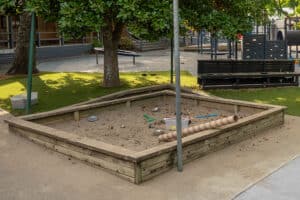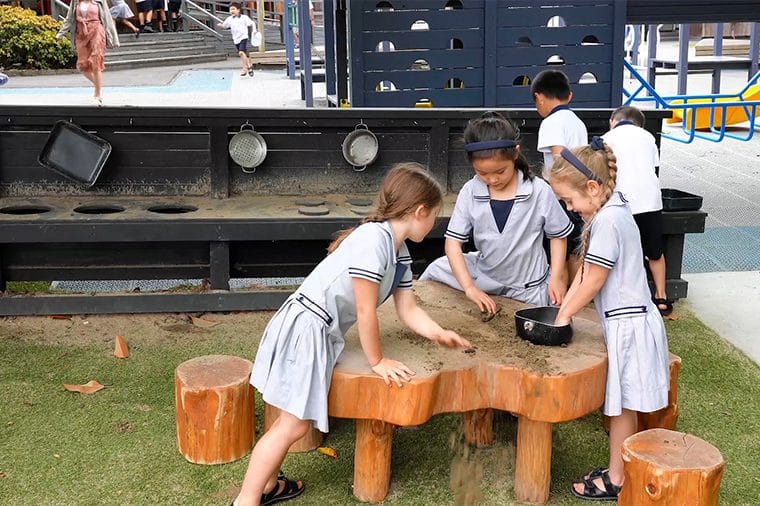Sand play is a fantastic natural learning opportunity that promotes imagination, creativity, cause and effect type play, and creates an all-around sensory experience.
Sand play is a great transition element for young, new entrants into the school environment. Most ECE’s and prior childcare facilities would have had a sandpit, giving students something that is familiar and allows there to be a space where parallel play can exist. Meaning you can play by yourself in a sandpit and still be playing around others, doing similar activities.
Children are instinctively drawn to sand play, and natural elements, making the sandpit one of the busiest places in the playground.
The sandpit is also one of the best places to learn. For example, sand has a great sensory dimension with its texture and changing consistency when wet or dry. Sand is also great for social learning. Children need no skills to play with sand, so they can easily play alongside each other. This is a good first step towards playing together and encouraging a collaborative environment.
Sandpits also provide flexible spaces that can be set up to capture and develop future interests. For example, one day the sandpit can be a construction site with trucks and rocks, another day it can be set up as an outdoor kitchen with cakemaking and mud pies.
Download the full guide: Activating Underutilized Space Guide
Creo sand play options
Built-in ground level sandpit.
This option is great for flow. Especially in sites where there are other associated sand play options such as outdoor kitchens. Children are also not climbing over the edge of the sandpit causing potential risks. It looks more natural and can often have plantings around its edges. Build-in sandpits provide easier maintenance for daily sweeping of sand back in. It’s also set up to be easier to tipping sand into when topping up.
Above ground sandpit.
Above-ground sandpits allow for the possibility of seated edges, playable edges, or edges that help separate and contain sand. The downsides are that younger users cannot crawl straight in and sand is harder to sweep back up into the sandpit. The edge may also cause tripping hazards and decrease visual supervision across the site.
Water play themed or natural.
This option offers all the benefits of a built-in, ground-level sandpit while adding the advantage of water. This allows for wet sand creations and an overall sensory experience.
Outdoor kitchens/house and shop play.

These structures help children to get creative with their play. They stimulate deep thinking and problem-solving. You can even add pullies, scales, and shoots into your sandpit for added learning opportunities.
Considerations when incorporating sand play.
Location is important when thinking about a sandpit. It needs to be close to the new entrants/junior classrooms but not located in the main thoroughfare. Sand travel and maintenance are something to consider as well. So tucked off to the side or semi-enclosed is best to minimize mess.
The sandpit is often the main feature on a site. Size, shape, and location are extremely important to get right. Edges need to be carefully considered to reduce sand travel as much as possible.
The area needs to be relatively dry, free-draining and sunny to ensure the sand stays healthy. Enough shade is also needed to ensure children are protected from UV while playing for long periods of time.
If a sandpit is desired or already existing, it’s great to think about how this fantastic play resource can be extended either through an outdoor kitchen, water inclusion or learning experiences. This adds interest to the area and gives students more opportunities to challenge students in their creative play.
For more elements of play check out our free downloadable book.

